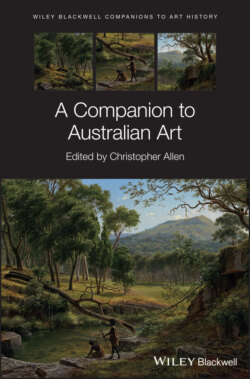Читать книгу A Companion to Australian Art - Группа авторов - Страница 34
A New Exhibitions Culture
ОглавлениеThe 1970s also saw the first blockbuster-type exhibitions, inaugurated by an astonishing collection of masterpieces of modern art lent to the NGV by MoMA in New York in 1975, the likes of which Australians had never seen before.21
The context was dramatically changing. A stream of major exhibitions imported from overseas inevitably lifted professional standards – new staff and new expertises were required. In 1977 a huge exhibition of Chinese antiquities toured both to the AGNSW in Sydney and the NGV in Melbourne, and it is true to say that Sydney, through the AGNSW, has achieved over decades a particularly strong reputation and track record for exhibitions of Asian historic and contemporary content.
Government also responded positively. In 1967 the Federal Government inaugurated an Australia Council for supporting the arts in Australia (modelled to a certain extent on the British Council), with a sub-committee, the Visual Arts Board, taking a special interest in the potential for supporting incoming major exhibitions, and working with the short-lived Australian Gallery Directors’ Council.22
From this point, Australian audiences came to expect major exhibitions of global stature, and since the late 1970s a huge number, many of exceptional quality, have been generated. This process continues, with an inevitable evolution of type and methodology.
To support this new phenomenon23 a management vehicle, the International Cultural Corporation of Australia (ICCA) was established, and this in turn, after a difficult period of instability, evolved in the early 1980s into Art Exhibitions Australia (AEA) with the well-known and respected Bob Edwards as CEO. To ensure a high level of professionalism nationally the federal government granted AEA a monopoly on access to federal government indemnity/insurance, without which large, ambitious exhibition projects could not proceed. This monopoly was maintained until 2009 when, after a government enquiry, it was felt that Australia’s major public art museums had reached a position where, in the field of exhibitions management, they had acquired sufficient expertise and specialist staff to act alone, should they choose to do so, and receive federal indemnity support directly. Since then, a hybrid system has operated.
The new phenomenon of blockbuster exhibitions, which transformed the way in which an ever-increasing number of Australians participated in public museology, could not be easily accommodated, as there were no dedicated permanent spaces for large temporary exhibitions. The new NGV in Melbourne had been designed just before the age of the imported blockbuster, and even Australia’s newest major public art gallery, the Australian National Gallery (rebranded as the National Gallery of Australia from 1993) was designed in the early 1970s, meaning that it opened in 1982 without a dedicated temporary exhibitions facility.
The need for the provision of such spaces necessitated, in due course, a new round of building projects, beginning with a special temporary exhibitions wing added to the NGA, opened in 1996. This was also one of the key drivers for the huge redevelopment project for the NGV, undertaken in the years 1999–2003. The provision of such spaces has been a key element of all museological planning in Australian galleries ever since, tied as it is to cultural tourism, and therefore to broader income generation for a city or state extending well beyond income from ticket sales, and these arguments have been central to all subsequent discussions with government and bureaucracy about arts infrastructure funding. The high costs of importing large, complex exhibitions into Australia (an issue shared with major art museums in East Asia) has meant that not all exhibitions have been able to deliver a profit, and in many cases boards of directors have been content to approve internal “break-even” budgets. There have been, however, many exceptions which delivered welcome profits, such as the NGV’s hugely successful post-redevelopment “Impressionist Masterpieces from the Musée d’Orsay” exhibition in 2004, with which it inaugurated the new “Melbourne Winter Masterpieces” program with 375 000 visitors, breaking the national attendance record for a ticketed exhibition. In 2009 the NGA in Canberra exceeded that record, with 478 000 visitors to what was effectively its sequel, “Post-Impressionism from the Musée d’Orsay.” More recently, the NGV has reported an attendance of 420 000 for its 2017 ticketed Van Gogh exhibition.
The “Melbourne Winter Masterpieces” program received additional grants from the government of Victoria on the basis that it be marketed as a major event for Melbourne alone, and that the state government’s financial support was contingent upon single venue exclusivity, driving inward cultural tourism, based on estimates of overall economic benefit. In many ways, this development broke the long-standing convention of imported exhibitions travelling to two or more venues in Australia, but it was perhaps inevitable in a rapidly changing world, with the historic sense of the remoteness of Australia as a key driver in the planning process no longer an inhibition. Having said that, one of the key factors in ensuring the generosity and high quality of global loans is the continuing validity of the argument that Australian audiences cannot travel to see major artworks in situ, as readily as Europeans and Americans can.
